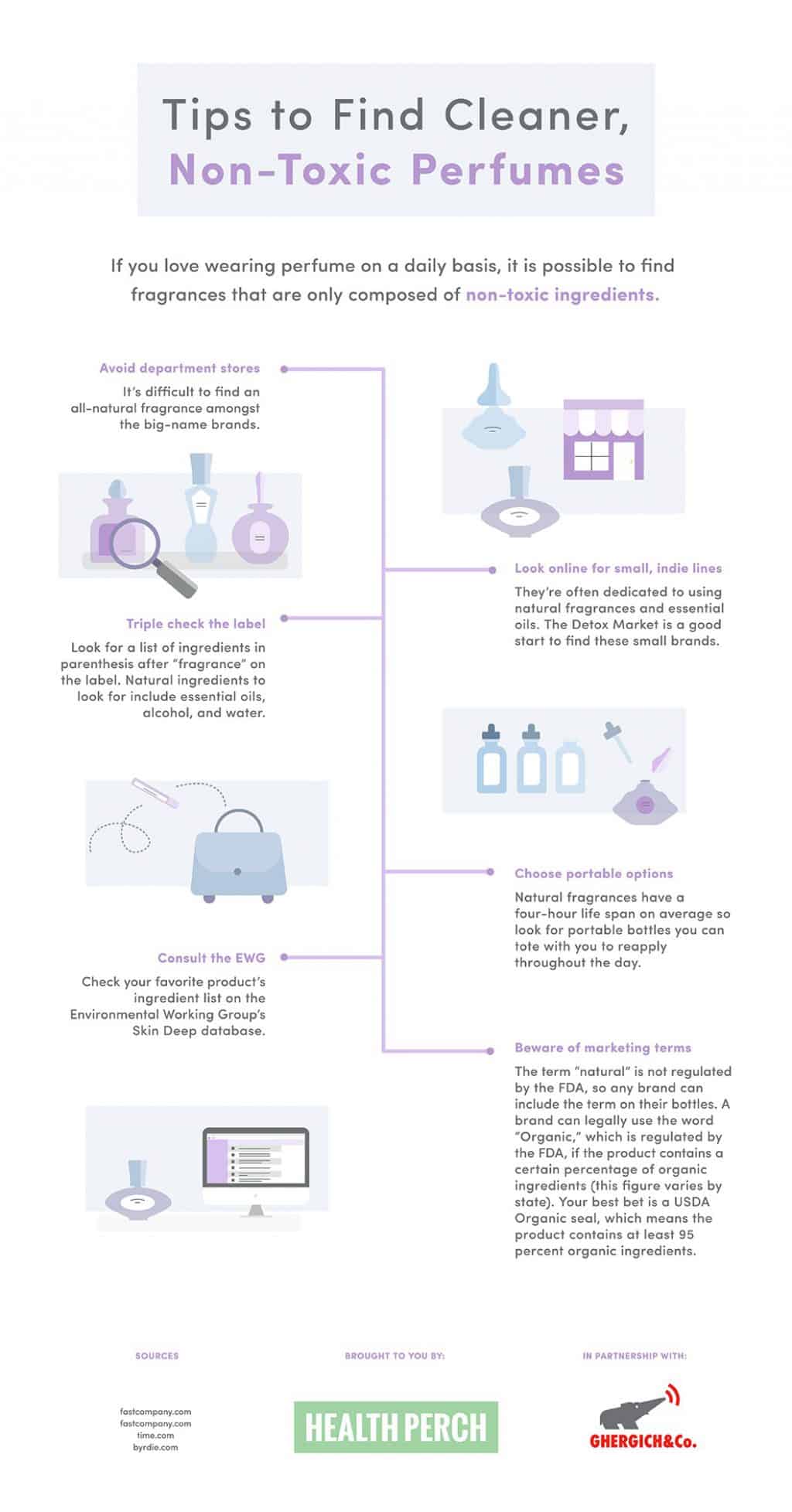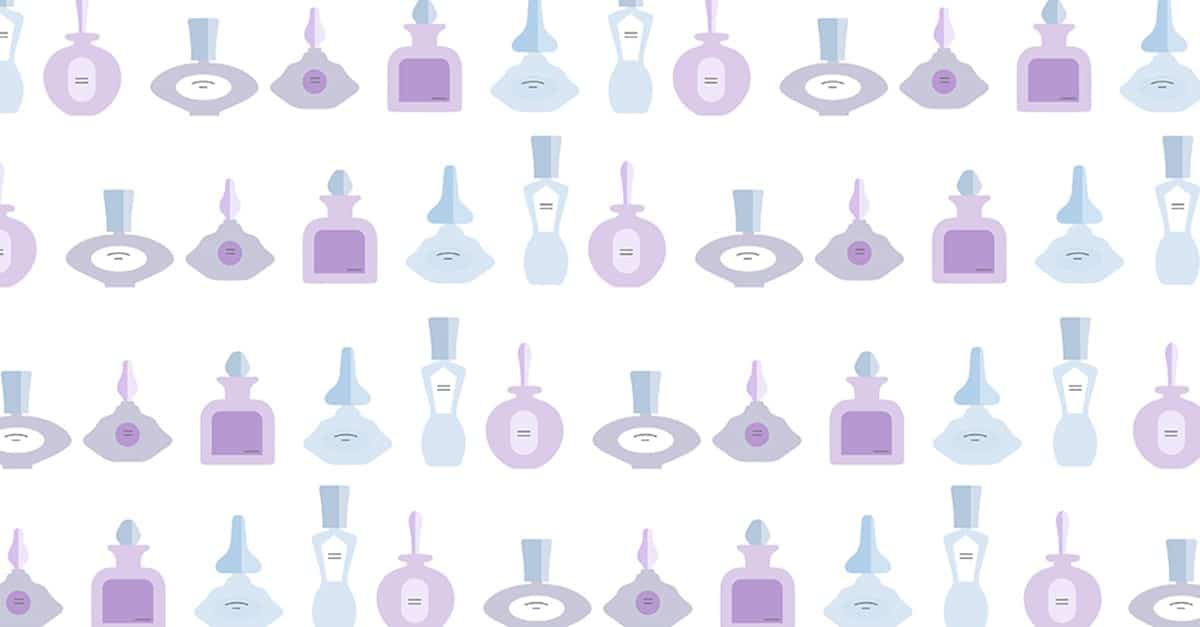
Spritzing on perfume before heading out the door may be an afterthought at the end of your beauty routine, but have you thought about the ingredients that make up your favorite fragrance? That rose scent could be composed of unrecognizable chemical ingredients that could result in more than just fragrant skin. Studies show fragrance is the leading cause of skin inflammation, affecting more than 2 million people.
If you’ve experienced sneezing, watery eyes, headaches, dizziness, wheezing, or skin reactions, you could be allergic to something in your perfume.
Toxic Ingredients Lurking in Your Fragrance
According to the Environmental Working Group, the average fragrance has 14 chemicals that are not featured on the label. Rather than listing out the specific chemicals, companies can simply include “fragrance” as an ingredient, thanks to an FDA loophole that makes it legal.
It’s tough to know exactly which chemicals are hidden in each formula, but any scented product likely includes phthalates. The petroleum-based chemical keeps all the elements in a perfume evenly distributed, but the troubling concern is that one in particular, diethyl phthalate, has been shown to disrupt certain hormones. Other studies have linked phthalates to liver and breast cancer. It’s unclear how much is too much, but rubbing perfume onto skin daily allows these chemicals to be absorbed into the bloodstream.
Other troubling chemicals include octoxynols and nonoxynols. These can also result in hormonal problems. In addition to perfumes, these chemicals can be found in facial cleansers, aftershave, astringents, hair color, and acne treatment.
The Purpose of Synthetic Ingredients
Over the years, natural ingredients have been replaced by synthetic ones to reduce costs and extend the shelf life of perfumes and other bath and body products. Using only naturally-sourced ingredients also becomes more complex when large companies are expected to produce mass amounts with consistent results. It’s much easier for small, indie companies to produce small batches with only natural ingredients, which is why they lead the way in the clean beauty industry.
Natural isn’t always better than synthetic. Synthetic simply means the ingredient was manmade rather than derived from animals or plants. There are several natural ingredients that are no better than synthetic ingredients—whether they’re harmful to humans or wildlife—so it’s best to pay attention to the proven troublesome ingredients, such as phthalates.
The European Union plus several countries, including Canada and Japan, have banned phthalates, yet the chemical remains legal in the U.S.

How to Avoid Fragrance Allergies
If you experience frustrating allergies or other health complications when exposed to fragrance, it may be easy to avoid the items causing them. But what happens when chemical-laden perfumes surround you in public spaces? Coworkers who douse themselves in eau de parfum could be the culprit for your office headaches. In this case, if you feel comfortable ask them to reduce the amount, or take your concerns up with HR.
Another culprit? Magazines. If the perfume samples included with many ads are bothersome, contact the publisher about a scent-free program.
